Stuart Harrison's Blog, page 5
June 13, 2013
What do publishers want?
I’ve been thinking a lot recently about what publishers are looking for when they consider taking on a book. I could use the word agent instead of publisher, because it seems to me they both want the same things. If you have a look around at agents’ websites, there are all kinds of guidelines and stipulations regarding submissions, but when you get right down to it most state one way or another that they want great books in their particular areas of interest. So far so good. What’s a great book though? It’s subjective of course, as many point out, but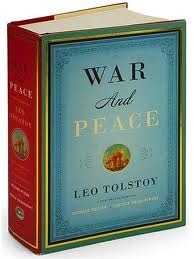 some will go further and talk about specifics such as strong characters, clever plots, great settings and so on. The trouble is, those things are all subjective too.
some will go further and talk about specifics such as strong characters, clever plots, great settings and so on. The trouble is, those things are all subjective too.
The real truth is that publishers and agents want books that will sell in large numbers, by authors who can produce more of the same on a regular basis. Their job is to try to identify which books and authors can fulfill that aim. They often get it wrong. They publish books/take on clients that don’t sell. They also reject books and clients that others take on, and then watch them become publishing phenomenon. How many of these authors have you heard of, all of whom had novels rejected that went on to sell millions? Dan Brown, Steven King, Nicholas Sparks? How about these novels; The Great Gatsby, Lord of the Flies, The Alchemist, Life of Pi. There are plenty of examples. It’s just the way it is, because publishing is a business based on subjective opinions.
So how does that help the aspiring writer? Well, it does if you think about it. Publishing is a business, and everyone involved is ultimately there to sell books and make money, though not exclusively of course. People work in any industry for all kinds of reasons. The fact is though, if agents don’t sell their clients to publishers and the publishers don’t sell books, they go out of business. For that reason authors have to approach writing as a business too, because that’s what it is. They have to write books people want to buy, and then they have to persuade an agent that they’ve accomplished that aim. The author also needs to think about how he/she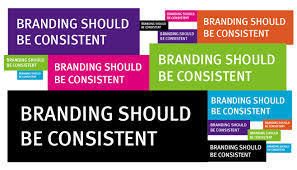 can continue to produce the goods. They need to think of themselves and their particular take on a genre as a brand. People buy brands they know and trust. It’s the same with baked beans as it is with books. Brands aren’t built overnight. It takes time and development. Brands deliver their promise consistently over time. So must authors. I have been terrible at this in the past. Bad mistake.
can continue to produce the goods. They need to think of themselves and their particular take on a genre as a brand. People buy brands they know and trust. It’s the same with baked beans as it is with books. Brands aren’t built overnight. It takes time and development. Brands deliver their promise consistently over time. So must authors. I have been terrible at this in the past. Bad mistake.
I began my writing career with The Snow Falcon. When I sent it out to agents, it was rejected by most, but one or two expressed an interest. Subjective, see. Long story short, it was published in the UK and elsewhere and did very well. My career as an author was finally launched in pretty good fashion. One day my family was poor, the next we weren’t. The next four novels I published were all decent books, but they were what are sometimes called cross-genre novels, which I think is a way of saying they were neither one genre nor another. In branding terms, I now realise that was a disaster. It’s like building a brand of baked beans and then one day you decide to change the recipe. You add hot sauce to the mix, or maybe brussel sprouts. People who were happy to buy your beans before are suddenly confused. They don’t know what they’re going to get anymore and so guess what, they switch brands. That’s what happened to me.
Very recently, I came to understand this lesson. The Snow Falcon is a love story. For a long time I didn’t see it that way. People would ask me what kind of book it was and as I twisted myself into knots trying to describe it as a relationship drama-come-suspense-come-whatever, their eyes would glaze over. Deep down I knew it was a love story, even though it has other elements, I just didn’t want to admit it because I didn’t see myself as a writer of love stories. Fast-forward to now and I’m preparing to send out The Flyer to agents. Even though in the synopsis I describe The Flyer as a story of love and loyalty, I suddenly realise that I don’t really think of it that way.
A month ago, if somebody asked me in a face-to-face situation what kind of story The Flyer is, I’d probably have started talking about relationships, and flying, and class during the era of the setting, and all the other themes. But that isn’t what people want to know, even if it is all true. Today, I’d say The Flyer is a love story, because it is. All that other stuff; the setting, the characters, my particular voice, they are the things that make my brand of love story a little bit different from anybody else’s, like Nicholas Sparks for instance. Those things are harder to communicate quickly. They take time. people have to try your product to see if they like it and if they do they’ll come back and buy it again, but they have to know what aisle to go to. Just like when they’re buying baked beans.
What has changed is that I’m not embarrassed to say that I write love stories. I have realised that, actually, I’m quite good at it. People said great things about Snow Falcon. They said it was a moving story, and they loved it. They never talked that way about other books I’ve written, until now. I’m getting the same kind of feedback about The Flyer, and it has finally dawned on me that I should be grateful and proud of that. So, just so I’m clear. Stuart Harrison writes loves stories. Which means I’ve got some work to do on this website and a lot more stories to write.
June 9, 2013
How I cut a hundred pages from The Flyer
Last time I posted, I got a little sidetracked. I’ve been talking about gettin g The Flyer ready to send out to agents, and how the version on this website is about a hundred pages too long for the publishing industry. See previous posts for the rationale. The sidetrack I took was to talk about designing an ad for Goodreads, targeted towards readers of authors I thought my work is comparable to. Well, it’s true I was designing an ad, which is now running, but I have a confession to make. Part of the reason I wrote about it was to see if somehow, through the labyrinth of SEO, I could get more people to visit my site by mentioning Nicholas Sparks. My web designer said it wouldn’t work. I respect her views because she knows about this stuff and I just don’t. She had to tell me what SEO means. It’s an acronym for Search Engine Optimization, which is the means by which people stumble across a webpage. Except using SEO there’s no stumbling involved. Theoretically. It’s about getting people to your site. Anyway, did it work? Hmmmm. Yes and no. Or to be more accurate, I have no idea. My site visits did jump a couple of days later but I wouldn’t say it was conclusive. We’re not talking thousands here. As for the ad, early days yet, but I did one for Snow Falcon and that did work, I just don’t know to what degree. Did I break even? Hmmmm. Don’t know that either. I’ll have to keep testing.
g The Flyer ready to send out to agents, and how the version on this website is about a hundred pages too long for the publishing industry. See previous posts for the rationale. The sidetrack I took was to talk about designing an ad for Goodreads, targeted towards readers of authors I thought my work is comparable to. Well, it’s true I was designing an ad, which is now running, but I have a confession to make. Part of the reason I wrote about it was to see if somehow, through the labyrinth of SEO, I could get more people to visit my site by mentioning Nicholas Sparks. My web designer said it wouldn’t work. I respect her views because she knows about this stuff and I just don’t. She had to tell me what SEO means. It’s an acronym for Search Engine Optimization, which is the means by which people stumble across a webpage. Except using SEO there’s no stumbling involved. Theoretically. It’s about getting people to your site. Anyway, did it work? Hmmmm. Yes and no. Or to be more accurate, I have no idea. My site visits did jump a couple of days later but I wouldn’t say it was conclusive. We’re not talking thousands here. As for the ad, early days yet, but I did one for Snow Falcon and that did work, I just don’t know to what degree. Did I break even? Hmmmm. Don’t know that either. I’ll have to keep testing.
So, back to editing The Flyer. The first 100 pages of the novel concerns William’s early life up 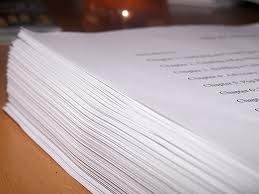 to the point where he meets the other main characters. When I wrote the story, his early life was essential, in my mind, to creating a fully formed character the reader could identify with. The Flyer could be described as a love story, but it is much more than that. In the second half, where the story moves to France against the backdrop of the first war to be fought in the air, the focus remains on the relationships between the characters, but the setting provides elements of danger and action too. My overriding goal from the beginning was always to write about William. I wanted to portray him as a strong character who overcomes repeated adversity, but who is affected by the events of his life. I saw him as lonely and emotionally distant, though always acting from the conflict that arises from his deep-seated desire to be loved and to belong and the fact that the people he cares about most represent the very kinds of people he has struggled against all of his life. My problem was that if I cut the first 100 pages, all the events that show how William
to the point where he meets the other main characters. When I wrote the story, his early life was essential, in my mind, to creating a fully formed character the reader could identify with. The Flyer could be described as a love story, but it is much more than that. In the second half, where the story moves to France against the backdrop of the first war to be fought in the air, the focus remains on the relationships between the characters, but the setting provides elements of danger and action too. My overriding goal from the beginning was always to write about William. I wanted to portray him as a strong character who overcomes repeated adversity, but who is affected by the events of his life. I saw him as lonely and emotionally distant, though always acting from the conflict that arises from his deep-seated desire to be loved and to belong and the fact that the people he cares about most represent the very kinds of people he has struggled against all of his life. My problem was that if I cut the first 100 pages, all the events that show how William 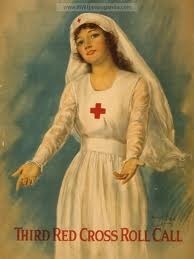 became the person he is are lost. How could I do that?
became the person he is are lost. How could I do that?
In the end, I had no choice, so the only course open to me was to re-insert William’s early life back into the narrative, but in small pieces either in conversation or as brief flash-backs. It wasn’t easy to do. I had to be mindful of the word-count otherwise I would be defeating the object of the exercise, but at the same time I had to try very hard to make certain that William remained a sympathetic character. The reader has to identify with his struggle and understand his underlying motivations for the story to work. I think that I achieved the result I wanted, which begs the question of whether the pages I cut were needed in the first place? Was this perhaps a case of killing my darlings, as I write about in another post, in the sense that it was editing the story had always needed?
In my view, the answer is no. I think the long version is the better one. Feedback from readers so far has been amazing, and they have all read the long version, so perhaps they would agree.
Which brings me to a plea. If you do read one of my books and like it, please consider posting a review on Amazon or Kobo or Goodreads or wherever. Writers need reviews. Thanks.
June 4, 2013
Nicholas Sparks and Stuart Harrison
Advertising is an expensive nightmare. Nevertheless, the other day I was designing an ad for  The Flyer to trial on Goodreads. As part of the process I had to target my ad to be seen by readers of authors to whom I might compare my style of storytelling. The logic being if a reader liked the books of X, that person might also like The Flyer. It was much harder than I thought. I wanted to be honest with my targeting, because it wouldn’t benefit either the reader or me to claim that my style is comparable to say, a bestselling crime novelist, horror writer, chick lit. author or writer of romances. I had to be confident that if a reader saw my ad and decided to check out the book on my website, then it was likely to actually appeal to them. In the end, after considerable research I came up with a list of authors, all of whom I’d read at some time or another, though in some cases I had to refresh my memory. It was an interesting list.
The Flyer to trial on Goodreads. As part of the process I had to target my ad to be seen by readers of authors to whom I might compare my style of storytelling. The logic being if a reader liked the books of X, that person might also like The Flyer. It was much harder than I thought. I wanted to be honest with my targeting, because it wouldn’t benefit either the reader or me to claim that my style is comparable to say, a bestselling crime novelist, horror writer, chick lit. author or writer of romances. I had to be confident that if a reader saw my ad and decided to check out the book on my website, then it was likely to actually appeal to them. In the end, after considerable research I came up with a list of authors, all of whom I’d read at some time or another, though in some cases I had to refresh my memory. It was an interesting list.
There were twenty-two names in all, for no particular reason except that I thought that was enough. A couple of things struck me right away. The split between male and female writers was exactly 50/50. I was surprised by that, because without thinking about it I expected the result to be weighted towards women authors simply because, although The Flyer is one of those stories that crosses genres, it is more than anything else a story of love and loyalty, themes I expected women to write about more than men. By the same logic, I’ve always assumed The Flyer, like The Snow Falcon and some of my other books, would appeal more to female readers than men. I see from my list that both those assumptions were probably wrong.
The first name on the list is Nicholas Sparks, author of Message In A Bottle and The Notebook, among others. The order in which the names appear is random, by the way, and was simply a result of the search terms I was using. At first glance, I wasn’t going to include 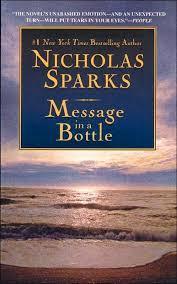 Nicholas Sparks on the list, but it turned out I could say the same for every single author that I ended up using, though for a variety of reasons. In the case of Nicholas Sparks, I wanted to use him because he’s a phenomenally popular and successful author, so if I could claim that his fans would probably like my work too, I knew I couldn’t be doing too bad a job. my reservations were based on my perception of Nicholas Sparks as a writer of stories that were close to being what I would term Romances, which I don’t think is a term that applies to The Flyer.
Nicholas Sparks on the list, but it turned out I could say the same for every single author that I ended up using, though for a variety of reasons. In the case of Nicholas Sparks, I wanted to use him because he’s a phenomenally popular and successful author, so if I could claim that his fans would probably like my work too, I knew I couldn’t be doing too bad a job. my reservations were based on my perception of Nicholas Sparks as a writer of stories that were close to being what I would term Romances, which I don’t think is a term that applies to The Flyer.
To solve the dilemma, I re-read part of Message In A Bottle, which I first read around the time in came out. I found that Nicholas Sparks writes about relationships and love, and he crafts his stories well, none of which was a surprise given his popularity. I can’t say they are the kind of books I normally read myself, but I read a huge variety of material across all genres. What I can say, however, is that Nicholas Sparks’ stories are character and emotionally based, as are my own. In terms of writing skill, however you define that, I asked myself if I honestly thought fans of Nicholas Sparks would enjoy The Flyer, and the answer was a definite yes.
If anyone reading this has a view, I’d love to hear it.
May 29, 2013
How Long is a great novel?
Last time I talked about the pragmatic reasons for keeping novels to a certain length for submission to agents and/or publishers. Actually most publishers don’t accept unsolicited work these days, everything has to come through an agent. So, for my own book, The Flyer, I had to c ut out 20% which was 25 thousand words, or about 100 pages. To tackle this I had to consider what the story was really about.
ut out 20% which was 25 thousand words, or about 100 pages. To tackle this I had to consider what the story was really about.
When I first had the idea for the The Flyer, I wanted to write about a character who felt like the world was against him. I saw him as lonely, isolated and emotionally withdrawn, but also determined and resilient. These are actually qualities that could apply to the character of Michael in The Snow Falcon, though at the time I wasn’t aware of this. Once I had this picture of the inner landscape of my character, the main arc of the book was easy. It was going to be about how William (the name I gave him) overcomes his loneliness. My first thought was, it had to be through love, so we’re talking love story, but then I decided I wanted something else too, another element, and I came up with the idea of friendship. Right away I had a woman and a close friend, and I felt like I was getting somewhere. Next came the setting, which was the era before and during WWI. I wanted to show how the war changed them, and I wanted the story to revolve around the air-war. I’m not particularly interested in planes, either modern or old, but I had read a little about early aviation, and it seemed romantic, adventurous and dangerous. They were all qualities I wanted in my book. So, plot details aside, I was left with one big question: Why was William lonely, isolated and emotionally withdrawn in the first place? What happened to make him like that?
through love, so we’re talking love story, but then I decided I wanted something else too, another element, and I came up with the idea of friendship. Right away I had a woman and a close friend, and I felt like I was getting somewhere. Next came the setting, which was the era before and during WWI. I wanted to show how the war changed them, and I wanted the story to revolve around the air-war. I’m not particularly interested in planes, either modern or old, but I had read a little about early aviation, and it seemed romantic, adventurous and dangerous. They were all qualities I wanted in my book. So, plot details aside, I was left with one big question: Why was William lonely, isolated and emotionally withdrawn in the first place? What happened to make him like that?
The first hundred pages of The Flyer concern William’s early life. These are the events and experiences that form him, from a terrible injury suffered in the opening chapter, to the subsequent bullying that he’s subjected to at boarding school, where he already feels isolated because he is a blacksmith’s son and it is only by a quirk of fate that he finds himself attending a private school where his fellow pupils are the sons of wealthy businessmen and landowners. Following these early chapters, I really put William through some difficult times. His life goes from bad to worse, and everything that happens increasing his sense of not-belonging. By the time he finally meets Christopher, who will become his friend, and Elizabeth who he will fall in love with, William really deserves a break and the reader is rooting for him. That anyway, was the plan, and actually I think I achieved the aim. In the shortened version, I decided to cut all of that.
More about my thinking soon.
May 23, 2013
Editing Hurts
In my last post, I talked about having to cut twenty percent of the Flyer to conform to the ‘rules’ of submission in the publishing industry. The job is done. Twenty five thousand words lie on the cutting room floor. Editing hurts, but to my surprise, on this occasion I quite enjoyed the process. In a way, at least.
I was surprised, because 20% is a lot by anyone’s standards. I wasn’t even sure I wan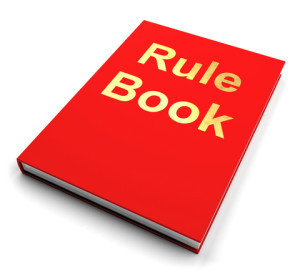 ted to do it. How could the story, which I thought was just fine the way it was (I still think that), survive that kind of attack? Thing is, though, if you want to get published in the traditional way, then writing a good book that people will want to read is only the first step. Then you have to get an agent to read it, and agree that not only is it a good book that people will want to read, but it is a book worthy of his or her time, effort and reputation, all of which are at stake when deciding to represent an author’s work.
ted to do it. How could the story, which I thought was just fine the way it was (I still think that), survive that kind of attack? Thing is, though, if you want to get published in the traditional way, then writing a good book that people will want to read is only the first step. Then you have to get an agent to read it, and agree that not only is it a good book that people will want to read, but it is a book worthy of his or her time, effort and reputation, all of which are at stake when deciding to represent an author’s work.
Agents get a lot of material submitted to them. I mean, really, a lot. Back when I actually had an agent, I saw the slush pile of manuscripts (in the pre email days). They pretty much cascaded through the letterbox every day and I don’t suppose that has changed. For that reason, agents apply filters at every stage of the process to weed out as much material as possible. There are rules, not cast iron, but rules nevertheless, that authors have to comply with when making submissions. I won’t go into them all here, but since I’m going to be submitting The Flyer, I’ll talk about more of them as I start the process. For now, I’ll stick to the one regarding novel length.
The Flyer is set in the period around the First World War, so the genre is historical fiction. Publishers want novels to have a maximum length, which is usually between 90 and 100 thousand words, though for historical novels that can stretch to 110, which is roughly 320 pages, depending on type, layout etc. The Flyer as it is represented on this site, which is the version that is for sale, is 135 thousand words. So why does it matter? Well, the answer is cost and risk, simply. This rule applies primarily to authors who are unknown or don’t have a more or less guaranteed readership, when things becomes much more flexible. It’s also far less important in the case of ebooks, for reasons that will become apparent.
Publishing is a business, and like any business, there is cost involved in getting a product into the hands of the end-user, in the case of books, that’s you and me, the readers. With a book, there are editing costs, which is a per-word calculation, and there are print, warehousing and distribution costs, which relate directly to the amount of pages in a book and its weight and physical dimensions. These don’t add up to a huge amount for a single title, but publishers print many titles, and when considered in that light, the costs are huge. For a foreign publisher, there are also translation costs to consider, which depend on the length of the book. It is for these reasons that publishers and therefore agents, stipulate a certain length for novels. I get this, and because of that I know if I submit The Flyer at 135 thousand words, there’s a good chance it won’t even be read. That’s the filtering process. And that’s why I had to chop out 20% of the novel I had slaved over. It’s tough, but that’s life, as we all know.
warehousing and distribution costs, which relate directly to the amount of pages in a book and its weight and physical dimensions. These don’t add up to a huge amount for a single title, but publishers print many titles, and when considered in that light, the costs are huge. For a foreign publisher, there are also translation costs to consider, which depend on the length of the book. It is for these reasons that publishers and therefore agents, stipulate a certain length for novels. I get this, and because of that I know if I submit The Flyer at 135 thousand words, there’s a good chance it won’t even be read. That’s the filtering process. And that’s why I had to chop out 20% of the novel I had slaved over. It’s tough, but that’s life, as we all know.
Next post I’ll talk about how I went about actually doing it.
May 19, 2013
Killing Your Darlings
The novelist William Faulkner is credited with advising that in writing, you must kill all your darlings. What he meant was that when writing a novel, you have to be ruthless with the 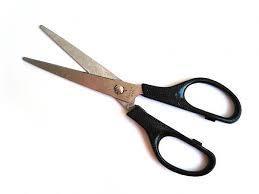 scissors and cut out the stuff the story doesn’t really need. I get that. I’ve been doing this for long enough now that I know how easy it is to pad a lot extraneous stuff into a book, and how difficult it can sometimes be for an author to accept that not everything that gets written is absolutely essential to the nuances of the story. Those nuances often exist only in my head. Other people refer to them as the boring bits.
scissors and cut out the stuff the story doesn’t really need. I get that. I’ve been doing this for long enough now that I know how easy it is to pad a lot extraneous stuff into a book, and how difficult it can sometimes be for an author to accept that not everything that gets written is absolutely essential to the nuances of the story. Those nuances often exist only in my head. Other people refer to them as the boring bits.
Having said that, when I start writing a novel I always have in mind a certain length I want it to end up as. It’s around a hundred and 120 thousand words, which in an average kind of book is around 350 pages. When I wrote The Flyer, which is set around the era of WWI, I had in mind an epic story of two characters from opposite ends of the social spectrum, who become friends, but eventually clash over the woman they both love. This set against the background of English country houses, early aviation and the war fought in the air over France. It was a theatre of bloody fighting, immense bravery and the last days of a kind of heroic chivalry attached to war. Romantic and tragic, which is how I saw the characters. How the hell could I write that in 120 thousand words? Answer; I couldn’t. So I ended up (even after liberal editing with the scissors) with a novel of 135 thousand words. A good-sized book to get your teeth into, which is exactly the kind of book I like to read, and that is the novel you’ll find on this site. 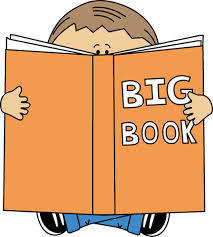
Now, fast forward to this morning. I have decided to submit The Flyer to a round of agents in the UK and USA. I’ve decided to do that because The Flyer is a good novel. I know, I wrote it, so I would say that wouldn’t I? Well, not really. I can’t speak for other writers, but I am very critical of my own work. I know that not all of my books are as good as I wanted them to be when I started writing them. In fact none of them are. Except The Flyer. But here’s the thing, if I want to submit this novel to agents, then I have to comply with the industry standards, and one of those pertains to length. For a novel of this type, and for an author without a ready-made, proven audience (It’s a while since The Snow Falcon was a bestseller) a novel must be no more than 110 thousand words. Tops. That means I have to edit out 25 thousand words! That is nearly twenty percent! It’s a lot.
The question is, do I want to do it? Do I even need to? If I answer yes, then how do I accomplish such an impossible seeming task?
I will answer those questions and more in my next post.
May 6, 2013
Update on the novel in progress
Last time I wrote a post here, I was gazing at out of the window towards my olive grove, which requires my attention. Well, not much progress on the olive tree front, though I did some pruning at the weekend. Today it’s raining hard and the temperature has dropped. After a long hot summer and an early autumn of still, clear and sunny days, the weather pattern may have changed. I just hope we don’t get hit by the severe winter the northern hemisphere is slowly emerging from. Anyway, today is a good day for writing, and on that front I have made progress.
Since my last post my site has had an update, more of a rearrangement than anything else, and part of the reason for that was to put my blog on the front page so that it’s easy to find. I’ve also changed the content of my posts to talk about the novel I’m currently writing so that anyone who’s interested in the process of writing can see how I go about it. This novel is a Stuart Harrison story, which means the Black Sun series I was writing as Stuart C Harrison has to take a back seat for now, though I hope to get a new, full length book in that series out by years end. Okay, so where am I up to in the process?
I keep banging on about planning, and that’s what I’ve been doing while the site was getting a facelift. I’ve been using a writing software program called Scrivener, something I’ve never done before. So far it’s working pretty well, but rather than spend a lot of time here describing what it does and doesn’t do, I’ll simply be talking about how I’m actually using it at any given time. Right now, I’m using it for organizing my novel plan. Essentialy Scrivener allows me to break down the story into little pieces such as scenes, synopsis, acts or whatever I like, including random notes, and keep them available on a single screen. As the novel plan becomes more complex, this is extremely useful.
So what is a novel plan, anyway? Well, it’s a road map of where the story goes, which is pretty obvious, and it includes information on characters, setting and what actually happens; the plot. I talked in an earlier post about the world where the story takes place, and this is the starting point after the actual inspirational idea for the overall story. The world isn’t the setting exactly, but rather the background to the story. It’s whatever has happened before the story begins, that forms the underlying motivation for the actions of the characters. Remember, I’m talking here about my own writing. I use methods I’ve worked out from my own experience, as well as those I’ve learned from books. Everyone has their own ideas, this is my take.
The idea behind the story I’m writing was this: I wanted to write about a relationship between a man and a woman, so a love story if you like, but I wanted the story to be dramatic, in the sense that the relationship struggles because the characters are driven by internal motivations that work against the relationship succeeding. So in novel speak, that’s conflict. The only other thing I knew about the story at this point was where I wanted to set it. That was easy. I decided to make the setting the Isle of Man, which is off the coast of northern England. I chose the island because I once spent a summer there in my early twenties. Some things happened during that time that I’ve never forgotten. Writing is catharsis, however well-disguised. Sometimes anyway.
Next step then, once I had the idea, was to start thinking about that particulars. I decided I wanted to make the relationship story part of another story. This is the surface story which provides the events that bring the people together and bring out the conflict between them. In that surface story, my protagonist is an undercover detective who is temporarily attached to the intelligence service in order to glean information about a possible threat to the Northern Ireland peace process.
When I got about this far, I started thinking about how these two stories would work together. Where’s the link? Who is the woman? What is driving these people? It’s not the surface plot, that’s only part of it. Although the surface plot is the outer world where events take place, it is the relationship between my two main characters that I’m really interested in. I need to know what really drives them, what events in the past have formed their characters. In other words, what defines them and sets up conflict that must be resolved by the end of the story.
About there, I went to bed. It’s like putting the casserole onto simmer. Let the juices blend and develop flavor. Something always happens then. It could be a scene, or a facet of character or just about anything, but something occurs to me and that’s what I start working with.
More next time.
May 5, 2013
Days when I look out the window…wistfully
I don’t work on weekends. Though I work fulltime as a novelist, by Friday afternoon I’m ready to knock off, have a beer and look forward to a weekend doing anything but writing. It’s not that I don’t enjoy writing, but I like having written much more than the actual writing part. Like many things, there’s tremendous satisfaction to be had at the end of the process and a lot of pain along the way.
Once I’ve started on a project, the story never completely leaves my head. I’m working on plot turns, character details and other ideas all the time. It’s what I think of when I wake up, when I go to sleep, when I shower (often for a long time) and sometimes (rudely) when I’m talking to people. Nevertheless, weekends are for other things. I like to do physical activities as a change from sitting in front of a computer screen all week. I fish and dive, both occasionally, play tennis a fair bit, and look after the fifteen acres we live on here in the Bay of Islands, in New Zealand. We have a few sheep to keep the grass down, a dozen chickens for eggs, a huge vegetable garden that I don’t go anywhere (that is my wife’s domain) and a hundred and fifty olive trees that I planted about four years ago. It seemed like a good idea at the time.
 I really liked the idea of having an olive grove. It smacked of creating a bit of the Mediterranean here, and since we use a lot of olive oil and I love olives with everything, how could it not be a good idea? Maybe if I had done some research first and understood how much work is involved in looking after the trees, I might have had second thoughts. The actual planting, I hired somebody to do, I’ll admit, but as it turned out they didn’t do it properly, so I still ended up doing the hard work myself. Putting a twig in the ground is easy. A spade load of dirt, handful of fertiliser, in with the plant and you’re done. Digging two, much deeper holes to take decent sized tree stakes, then hammering them in, is much harder. I know. That’s two stakes per tree. Three hundred holes. Even that was only the start of it. I imagined putting the sheep in amongst the trees to keep the grass down, though I knew I wouldn’t be able to do that until the trees were big enough to survive being rubbed against or simply eaten. Four years on and I’m still mowing the acre and a half or whatever it is where the olives are. Plus I have to spray for weeds around the trees and prune them. It’s pruning time about now.
I really liked the idea of having an olive grove. It smacked of creating a bit of the Mediterranean here, and since we use a lot of olive oil and I love olives with everything, how could it not be a good idea? Maybe if I had done some research first and understood how much work is involved in looking after the trees, I might have had second thoughts. The actual planting, I hired somebody to do, I’ll admit, but as it turned out they didn’t do it properly, so I still ended up doing the hard work myself. Putting a twig in the ground is easy. A spade load of dirt, handful of fertiliser, in with the plant and you’re done. Digging two, much deeper holes to take decent sized tree stakes, then hammering them in, is much harder. I know. That’s two stakes per tree. Three hundred holes. Even that was only the start of it. I imagined putting the sheep in amongst the trees to keep the grass down, though I knew I wouldn’t be able to do that until the trees were big enough to survive being rubbed against or simply eaten. Four years on and I’m still mowing the acre and a half or whatever it is where the olives are. Plus I have to spray for weeds around the trees and prune them. It’s pruning time about now.
I’ve made a start. This is the first year I’ve pruned, mainly because I have no idea what I’m doing, so the trees are a bit of a tangled mess. You’re supposed to prune so a bird could fly through, I think. Right now, any bird that attempted to do that would hit a thicket of branches as dense as a brick wall. In other words it’s a bit of a mission. The ones I’ve done have taken fifteen minutes each. So I can manage four an hour, forty in ten hours and so on. It’s going to take about a week, except that I’m trying to write a novel and I can only spare an hour a day, so it’s going to take about forty days unless I put in some solid time at the weekend. Truth is though, I can only do a couple of hours at a time because it’s not a job I enjoy. I don’t know why. It’s not very demanding physically or anything. I suppose it’s just boring. I can’t spend a whole weekend pruning anyway, because I have a lot more stuff to do around here that can’t wait. lawns to mow, weeds to pull, chop and spray. Trees to chainsaw. Sheep to chase, and so it goes.
So my point is, that by Monday I’m usually pretty happy to be back in front of my novel in progress. Unless, that is, I’m having issues. I’m having issues now. The planning process has hit a road bump. A big one. I’ve discovered plot problems that I hadn’t envisaged. I kind of knew they were there, but I thought by the time I got around to confronting them a solution would occur to me. It hasn’t though, so for the past two days I’ve been attacking the issue from various angles and getting nowhere. It’s very, very maddening. I feel as if I’ve wasted entire days and achieved nothing. Even worse, I’m starting to suspect that fixing the problem is going to mean going back to the drawing board with my entire novel plan. So weeks of wasted work. So that’s why I was looking out of the window wistfully earlier. I was thinking about going out to prune some olives. I didn’t though because I have to stay on track. This is my job and I haven’t made much money lately. Not to put too fine a point on it, I need to sell some books so I can’t afford to stop writing, even for a day.
Actually though, it isn’t all bad. I could’ve actually written a draft instead of planning as I am, and since the issues I’m talking about occur towards the end, I would’ve ended up with huge amount of wasted effort. Either that or I would have tried to patch up what I had with endless rewrites and ended up with a confused, and probably bad book. The thing is, when you can’t make the end of a novel work, it’s generally a major problem. It may well mean that all the stuff leading up to that point (the entire book) is fatally flawed, and was from the start.
 So that is why novels should be planned, and also why some people start at the end, and then go back to the beginning. I think I might try that. Right now I think I’m going to go and prune an olive tree. Did I mention, by the way, that my olives have not produced any fruit yet? Despite the hundreds of hours I’ve spent caring for them? I have a very bad feeling I did something wrong at the beginning, though I don’t know what. Maybe I put the wrong trees in, or the soil is deficient or something. Sounds like a case of bad planning.
So that is why novels should be planned, and also why some people start at the end, and then go back to the beginning. I think I might try that. Right now I think I’m going to go and prune an olive tree. Did I mention, by the way, that my olives have not produced any fruit yet? Despite the hundreds of hours I’ve spent caring for them? I have a very bad feeling I did something wrong at the beginning, though I don’t know what. Maybe I put the wrong trees in, or the soil is deficient or something. Sounds like a case of bad planning.
Planning the great novel; Day One
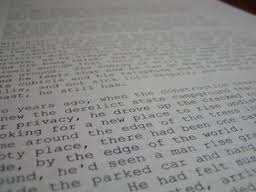 Actually the title of this post is a bit misleading, because this isn’t really day one of the process of writing my next novel. I’m about five weeks into it, though for the purposes of this blog that’s a good thing. It helps to have a fairly well-developed idea of what I’m going to be planning. Also, the great novel part isn’t meant literally. Though you never know.
Actually the title of this post is a bit misleading, because this isn’t really day one of the process of writing my next novel. I’m about five weeks into it, though for the purposes of this blog that’s a good thing. It helps to have a fairly well-developed idea of what I’m going to be planning. Also, the great novel part isn’t meant literally. Though you never know.
I’ve spent the last three days looking at some of the different writing software available these days. I downloaded trial versions of three of them and went through the tutorials to get a feel for how they worked. The three I chose were WriteWay, Dramatica and Scrivener for Windows. I didn’t like the first one at all, so I won’t say anything more about it except that it looked and felt a bit like a kids Lego set or something. It just wasn’t for me. The other two both felt more serious and professional. I liked them both and could have gone either way, but I chose Scrivener in the end because it’s probably easier to use.
Writing software, I ought to say, is simply software that helps to organise work and have it easily accessible. The ones I tried had features that create visual representations of the work in progress, which is useful for somebody like me who is visually creative. I ‘see’ my stories like movies, so anything that helps me turn that movie in my head into something that allows me to look at the big picture physically, and then tear the components apart and muck around with them has my vote. Both Dramatica and Scrivener allow me to do that. The problem is I’d need a screen the size of a whiteboard for it to be a really effective tool, and I use a laptop. I can’t afford to buy a massive screen right now, so I’m going to use the software in conjunction with old-fashioned cards pinned to the wall, duplicating to some extent what the software can do. Dramatica, by the way, differs from Scrivener mainly because it’s actually designed to prompt the user to build their story according to the principles of story telling. It does this by asking a lot of questions as you use it. It’s actually very clever, but personally I find the level of detail the software encourages is a bit distracting.
So moving on, today I took the messy notes that I have in various word documents, plus fifty thousand words of actual writing, plus a whole lot of notes written on pieces of paper, and I got rid of it all. It sounds a bit drastic, but it isn’t really. All the important stuff from that work is in my head. For the past five weeks I’ve been thinking and writing and plotting and note-taking, and then doing a lot more thinking. Now what I’m going to do is start getting my plans written down again, but this time in a much more organised form using Scrivener. Today I started with the background. That’s what I call it anyway. Different books and tutorials use different terminology to describe writing. I find a lot of it a bit too analytical and rigid for my visual brain, so I like to keep things simple and use terms that I understand.
For me, the background is the foundation stone of a novel. It’s what I need to know before I can go any further unless I want to quickly get stuck. The story I’m planning now is set ten to fifteen years in the future, following the events that happened in the first three episodes of the Black Sun Series. The world has changed from the world we live in now, and for this book it is that world that forms the background to the story. I need to know what it looks like and how it works. I don’t need to know everything, however, only the parts that are relevant to the story. Once I’ve written that background, which I have because I did it today, I can move on to the next part. I was able to write the background so quickly because I’ve spent a lot time already thinking about it. So, the background in this case is self-explanatory; it’s the aspects of the world where the story takes place that directly affect the story, but it isn’t always so obvious.
When I wrote The Snow Falcon, I didn’t do any planning at all, as I mentioned in my last post, but if I was writing that book now, the background would primarily be information pertaining to the lives of the main characters, which is usually referred to as their back story. Some of the characters in my work in progress will have back stories too, and they are relevant to the overall novel because they explain why the characters do the things they do. It’s what motivates them, deep down. However, I could write the story I’m thinking of without those back stories if I wanted to. The characters could react to events because their roles predispose them to do so, like when a cop investigates a crime, for example. It’s what cops do. The character could still be complex and interesting without necessarily having a back story, at least not a detailed one. In The Snow Falcon, without the events of the past, there wouldn’t be a story in the present. It is a story about the internal landscape of the characters as much as it is about the events that take place. In fact most of the events arise from those internal landscapes. Their psychology is what makes the story work. The main character is a lonely, isolated man with a history of mental breakdown and dysfunctional parents, who returns to the small town where he grew up to work out his demons. Nobody wants him there. The detail in all of that is the background, and if I was writing that book now, that’s where I’d start.
Next post I’ll talk about character some more, which is what I’ll be putting into Scrivener next, along with the overall outline of the story.
Planning the great novel

I was having coffee with a friend yesterday and we were talking about the process of writing a novel. He told me about a well-known author who recounted a occasion when, at a party, a respected surgeon approached her and mentioned that he had often thought about writing a novel, and wondered if she had any tips he could use. She replied that she would be happy to offer some advice, but before she did, she wondered if he might give her a few pointers, because she had often thought she might like to try her hand at a bit of surgery. Apparently the surgeon didn’t speak to her again that night.
The point, of course, is that many people assume that writing a novel isn’t that hard. Probably you just needed to have been good at English at school. The truth is that being a novelist is just like any other occupation; it involves skills that have to be learnt. When the surgeon asked the author for tips, he probably wanted to know how to find an agent and a publisher once his book was finished. I’ve experienced this myself. People want to know the secret to getting a publishing deal. They’re invariably disappointed when I tell them there is no secret. As in all things you need some luck, and the more the better, but even with all the luck in the world, you need something else too; you need to write a really good novel, especially if you have not been published before.
Novels are complex things. They don’t just happen. There are two broad schools of thought concerning how a novel should be written. One approach is to sit down and simply start hammering out a rough draft of your story, which usually begins with a central idea and theme, and maybe a setting and one or two characters. It’s a very creative process, and it’s probably how many first novels get written. I wrote three like that, and the first two never made it past the agent’s slush piles, but the third was published very successfully back in 1999/2000. The novel took me nine months to write working full-time, and many drafts. I once worked out that I must have written about a million words to end up with a 120 thousand word novel. Like many published first novels, mine had some autobiographical roots and I think that often helps overcome what can sometimes be a lack of proper structure.
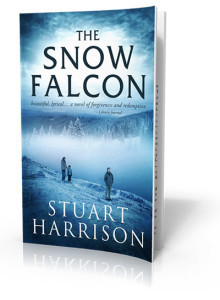 The Snow Falcon was published in a number of countries and seemed to strike an emotional chord with readers. Though it wasn’t that long ago, people really weren’t using the internet much then (a fact which amazes me, when I think about it now. So much has changed so quickly) so websites and emails weren’t being used much, certainly not by authors. I got a lot of letters though, from all around the world, from readers who wanted to tell me how much they liked the book. Think about that. Letters. They have to be written on paper, put in an envelope with a postage stamp and dropped in a mail box addressed to the publisher, who then forwarded them to me. That’s a fair bit of effort compared to firing off a quick email, and I’m grateful to every single person who wrote to me. The point I want to make though, is this; last year I re-read that book for the first time in a long while, and with the benefit of the experience I’ve gained over the fourteen years since it was written, I saw a lot of flaws, a lot of things I didn’t like. So I re-wrote the entire book from start to finish and now I think it is a much better novel. When I decided that I was going to do that, I began by making a plan.
The Snow Falcon was published in a number of countries and seemed to strike an emotional chord with readers. Though it wasn’t that long ago, people really weren’t using the internet much then (a fact which amazes me, when I think about it now. So much has changed so quickly) so websites and emails weren’t being used much, certainly not by authors. I got a lot of letters though, from all around the world, from readers who wanted to tell me how much they liked the book. Think about that. Letters. They have to be written on paper, put in an envelope with a postage stamp and dropped in a mail box addressed to the publisher, who then forwarded them to me. That’s a fair bit of effort compared to firing off a quick email, and I’m grateful to every single person who wrote to me. The point I want to make though, is this; last year I re-read that book for the first time in a long while, and with the benefit of the experience I’ve gained over the fourteen years since it was written, I saw a lot of flaws, a lot of things I didn’t like. So I re-wrote the entire book from start to finish and now I think it is a much better novel. When I decided that I was going to do that, I began by making a plan.
 So, that brings me to the second method for writing a novel, which is to very thoroughly plan the story in every detail from beginning to end before starting an actual draft. Planning involves some basic structural rules that virtually every good story that has ever been written follows. There are books all over the place that will explain those rules in detail, and even software that will help you apply them. Actually, I’m about to buy some software to try because I’ve never used anything other than Word and a lot of notes before, so I’ll let you know how that works out. The rules I’m talking about aren’t the kind of rules made up by somebody somewhere, just because they thought everyone should write in a certain way. In fact, they are not so much rules as simply the way our minds naturally construct good stories. Note that I use the word good there. Good, in this sense is not subjective. A good story is easily defined. It is one that people want to read, or hear, or watch or experience in whatever form, and people will judge a story to be good if it follows certain conventions of structure. For example, it must have a beginning a middle and end. It must have conflict and resolution and it must be properly paced and there must be reversals where the unexpected happens. Those are some of the components that must be planned. They are the foundations of the story, and just like a house, if they’re not done properly, the house is going to have cracks and faults, and in extreme cases it might just fall down altogether.
So, that brings me to the second method for writing a novel, which is to very thoroughly plan the story in every detail from beginning to end before starting an actual draft. Planning involves some basic structural rules that virtually every good story that has ever been written follows. There are books all over the place that will explain those rules in detail, and even software that will help you apply them. Actually, I’m about to buy some software to try because I’ve never used anything other than Word and a lot of notes before, so I’ll let you know how that works out. The rules I’m talking about aren’t the kind of rules made up by somebody somewhere, just because they thought everyone should write in a certain way. In fact, they are not so much rules as simply the way our minds naturally construct good stories. Note that I use the word good there. Good, in this sense is not subjective. A good story is easily defined. It is one that people want to read, or hear, or watch or experience in whatever form, and people will judge a story to be good if it follows certain conventions of structure. For example, it must have a beginning a middle and end. It must have conflict and resolution and it must be properly paced and there must be reversals where the unexpected happens. Those are some of the components that must be planned. They are the foundations of the story, and just like a house, if they’re not done properly, the house is going to have cracks and faults, and in extreme cases it might just fall down altogether.
Having said all the above, planning the structure is only a part of the process, albeit an essential one. What comes next is the actual story composed of the setting, characters, themes, plot and so forth, and this is where stories start to fit into various genres and appeal to different types of audiences. It’s the subjective part, and it involves the author’s creative skills. This is where what is perceived as good or otherwise becomes entirely subjective.
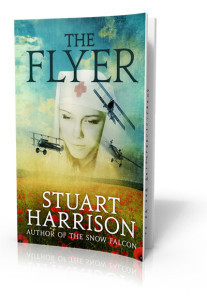 I think most novels are written using methods that fall somewhere between these two approaches. Speaking for myself, my approach when I began writing was very much the creative seat-of-the-pants method, which involved a lot of rewriting as I tried to get the story to where I wanted it to be. The results, I think, were mixed. I’ve written some good books and some not-so-good books. These days, I lean much more towards the planning school of thought. By far and away the best novel that I’ve written, in my own opinion, is The Flyer, which I not only planned quite carefully, but researched extensively. With the novel I’m currently writing, however, I’m taking the process another step and I’m planning every element of the novel from start to finish. I’m already well into that stage, and I can see just how much better the finished book will be. The reason for that is very simple and I can sum it up in one short phrase: I understand the story so much better.
I think most novels are written using methods that fall somewhere between these two approaches. Speaking for myself, my approach when I began writing was very much the creative seat-of-the-pants method, which involved a lot of rewriting as I tried to get the story to where I wanted it to be. The results, I think, were mixed. I’ve written some good books and some not-so-good books. These days, I lean much more towards the planning school of thought. By far and away the best novel that I’ve written, in my own opinion, is The Flyer, which I not only planned quite carefully, but researched extensively. With the novel I’m currently writing, however, I’m taking the process another step and I’m planning every element of the novel from start to finish. I’m already well into that stage, and I can see just how much better the finished book will be. The reason for that is very simple and I can sum it up in one short phrase: I understand the story so much better.
The story I’m talking about was originally intended to be episode four of my Black Sun series of short novels, but I’ve had a change of plan. I’ve decided to write a full length novel which can be read either as a stand alone story, or as a sequel to the first three episodes which are also now available as a single book. The main reason I’m doing this is simply that I want to see both books in print and available in bookshops, rather than sold primarily as ebooks, and short novels don’t work well in terms of cost of distribution that way.
I’ve also decided that I’m going to make the real-time planning and writing of my current novel the subject of future blog posts. If you’re interested in how a novel is planned, or at least the way I’ll be doing it, then you can come back here and kind of see the whole thing develop. I’m not sure how it will work, exactly, because I’m using a variety of ways to plan the story, including a board pinned with colour coded cards that helps me to visually track the various elements of the story. I’ll probably take pictures of that part to show you what I’m doing, and maybe I’ll do some videos too. What I’ll probably also do is tell you about how I’m feeling about the process, because that’s a part of it too. Nothing happens in isolation for anybody. Whatever we do for a living, we’re all affected by the other aspects of our lives, so we have good days and bad days and so-so days. In my case I have days when I think what I’m working on is fantastic, and days when I think it’s totally wrong and I’m wasting my time, and maybe there’s some added pressure because of some financial or family issue or whatever. So, it’s just life, the same as everybody else. When that happens I have to push through, so I’ll talk about all that as well.
So, I’ll start with the next post, which will be a lot shorter than this one. I’ll probably do frequent short updates, and then maybe long ones and maybe a video every now and then so you can follow the process as closely as you like. We’ll see how it works out.



